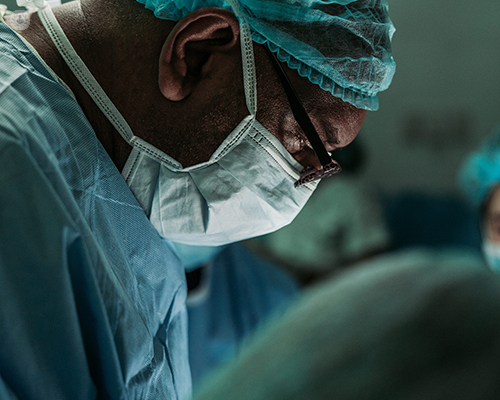Robotic surgery: a comprehensive guide
Written in association with:Robotic surgery is becoming an increasingly popular option over traditional surgery, with more and more patients opting to choose robotic surgery for their required surgery, but what is it and how does it work? Multi-award-winning consultant robotic and colorectal surgeon Professor Deena Harji answers your questions about the surgery,

What is robotic surgery?
Robotic-assisted surgery uses cutting-edge technology to perform a minimally invasive (keyhole) operation. It allows the surgeons to perform a variety of different procedures through multiple small incisions. The robot consists of three key parts:
- Surgical arms with tiny instruments at their tips.
- A special camera that provides high-definition, magnified 3D surgical views.
- A surgeon console where the surgeon controls the instruments and camera.
What conditions can be treated with robotic general and colorectal surgery?
There are several operations which are traditionally performed laparoscopically (keyhole) that can be performed robotically. Some of these operations may include removing sections of the small or large bowel and repairing hernias.
Each patient and operation are carefully assessed for the suitability of robotic surgery and they will be offered a robotic approach to their surgery if suitable and available.
What advantages does robotic colorectal surgery have over laparoscopy?
Robotic technology is a favourable approach because it allows for greater precision, flexibility, better visualisation and control compared to other traditional methods of surgery. This has several benefits including:
- Smaller incisions (scars)
- Less blood loss
- Less pain
- Quicker recovery
- Shorter length of stay
What is recovery like following robotic surgery?
Recovery is much shorter following robotic surgery. Depending on the procedure and your overall clinical and health status, you may be able to:
- Get out of bed shortly after the anaesthetic wears off.
- Eat and drink shortly after surgery.
- Go home the same day or within a few days of surgery.
You will receive clear instructions that are specific to your procedure when you are discharged home. These instructions include the following recommendations:
- Taking it easy for a period of time.
- Resuming everyday activities gradually.
- No heavy lifting for a period of time.
- Taking pain relief and other medications as appropriate.
If you require an operation that can be performed endoscopically and would like to book a consultation with Professor Harji, simply visit her Top Doctors profile today.


